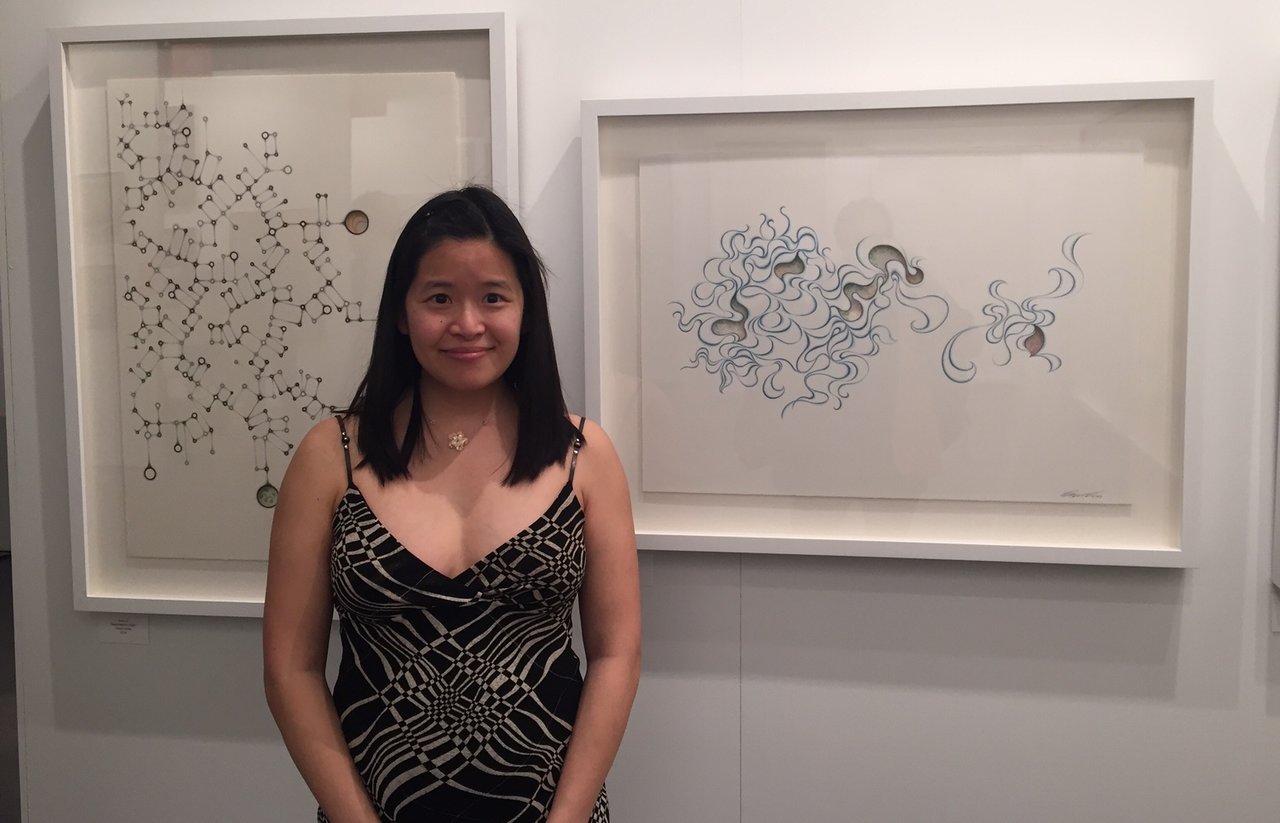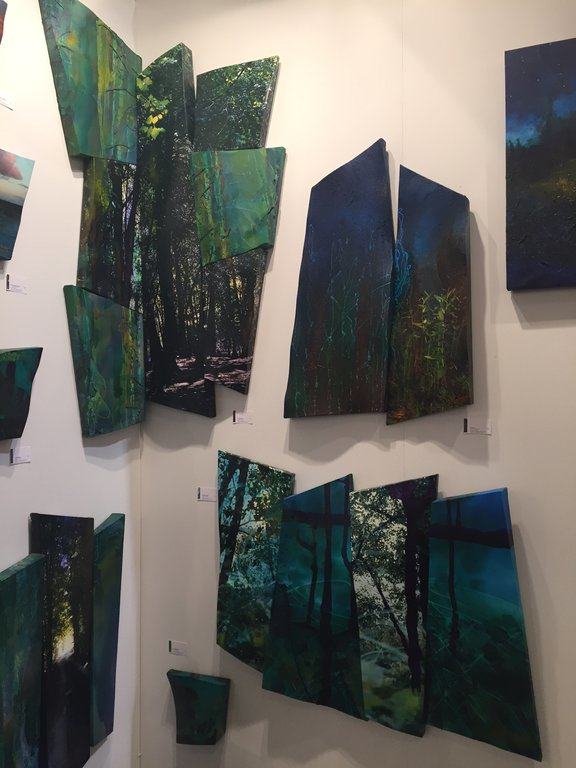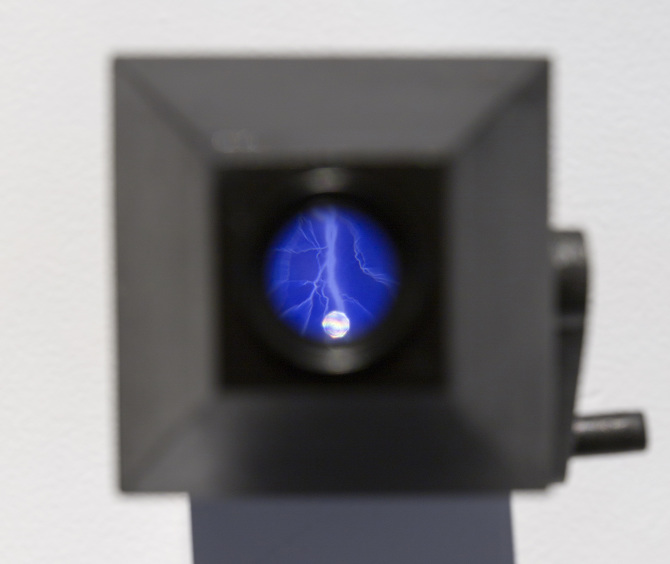Toronto’s most diverse and engaging art fair, Artist Project, is a great opportunity to meet contemporary Canadian and international artists and hear them speak about their work. The fair also boasts a thrilling number of events, parties, performances and talks including Art Battle – Live Competitive Painting. Be sure to take advantage of the free re-admission slip to return any of the days for free.
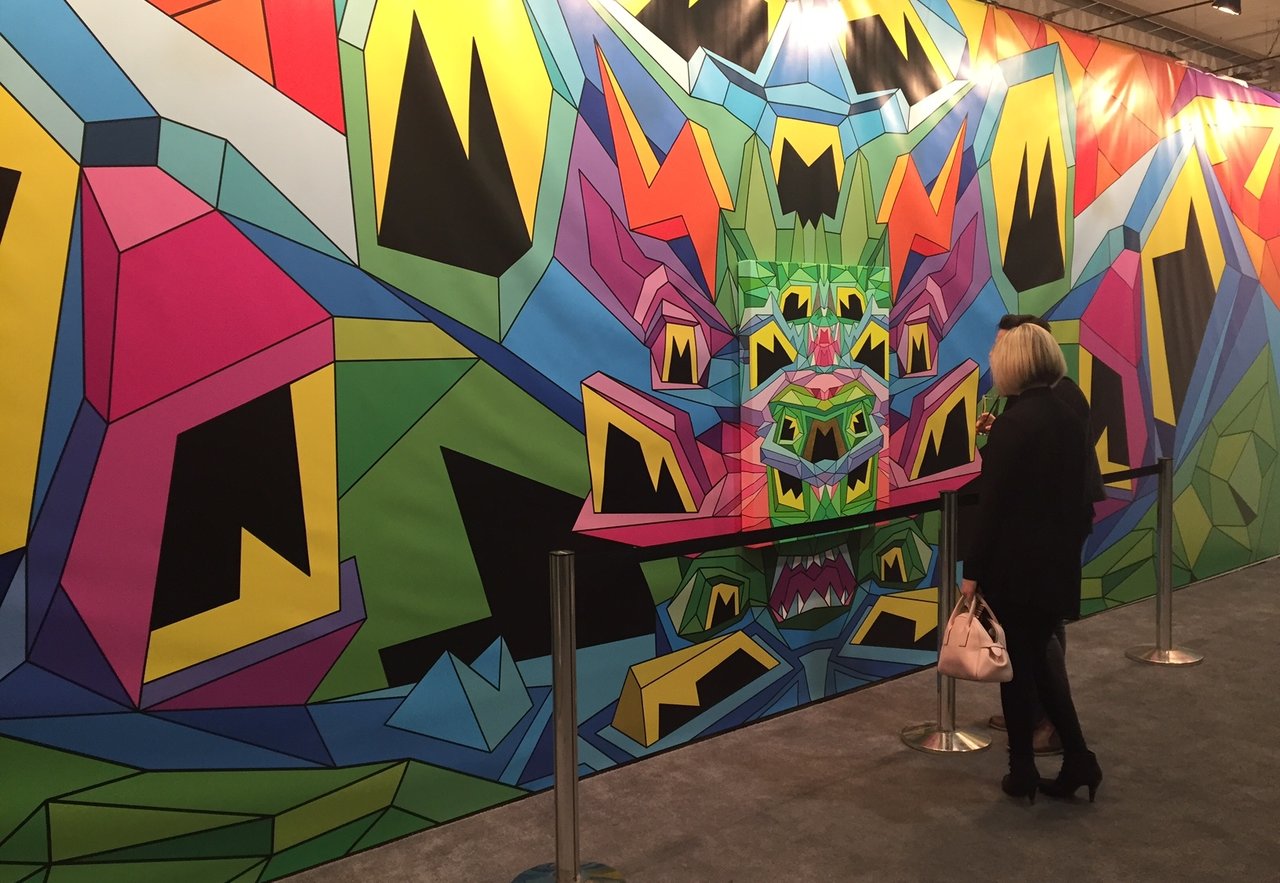 Happy Sleepy, “crystal kings blazing” at the entrance
Happy Sleepy, “crystal kings blazing” at the entrance
It can be overwhelming to take in the works of over 300 artists even over the whole weekend, so these are a few artists whose diverse practices are eye catching. Amy Lin’s layered paper works represent systems and constellations of community. Layered and sometimes not visible at all beneath the delicate hand-cut lattice, the swirling patters are both micro and macrocosms of our individuality and interconnectedness. Some of the stylized layers that define the surfaces reappear in deeper layers of other works as if each one held a wormhole to another. Sneakily, Lin also has works in which the layered cutouts only imply the presence of underlying systems from her other works inspiring curiosity while hiding nothing. This beautiful, intricate, cohesive body of drawings not only catches our gaze, it is also hypnotic.
Blending photography, abstract acrylic paint, found materials and sculpture, Paul Brandejs’ works draw us into their beauty and the serenity of natural landscapes. Brandejs begins with an immersive natural experience, taking his photographs on camping trips and hikes and then applying paint to capture a more soulful documentation. In his works of the night sky and the moon, the angular frames on which the canvas is stretched create shifting shadows and vertical tree shapes. At Brandejs’ booth, I saw my first corner painting showing the curatorial potential of his multi-paneled compositions.
Selections from several photographic series represent the mystical oeuvre of Alice Zilberberg. In one collection, stoic representations of Mother Nature, and natural goddesses allude to Renaissance and Baroque Madonna and Child iconography. In another series, childhood fairy tales are taken back to their dark roots including a black-haired Rapunzel who hangs her hair through three portals to nowhere. In a similarly surreal style, some of her work alludes to the disjointed paintings of surrealist Magritte. In a collaborative series of poetry and self-portraiture, Zilberberg plays on the trope of body language. All the subjects of her photographs are luminous women, emphasizing female power, a connection with nature, pronouncing the leaders of narrative, and re-writing iconography of femininity.
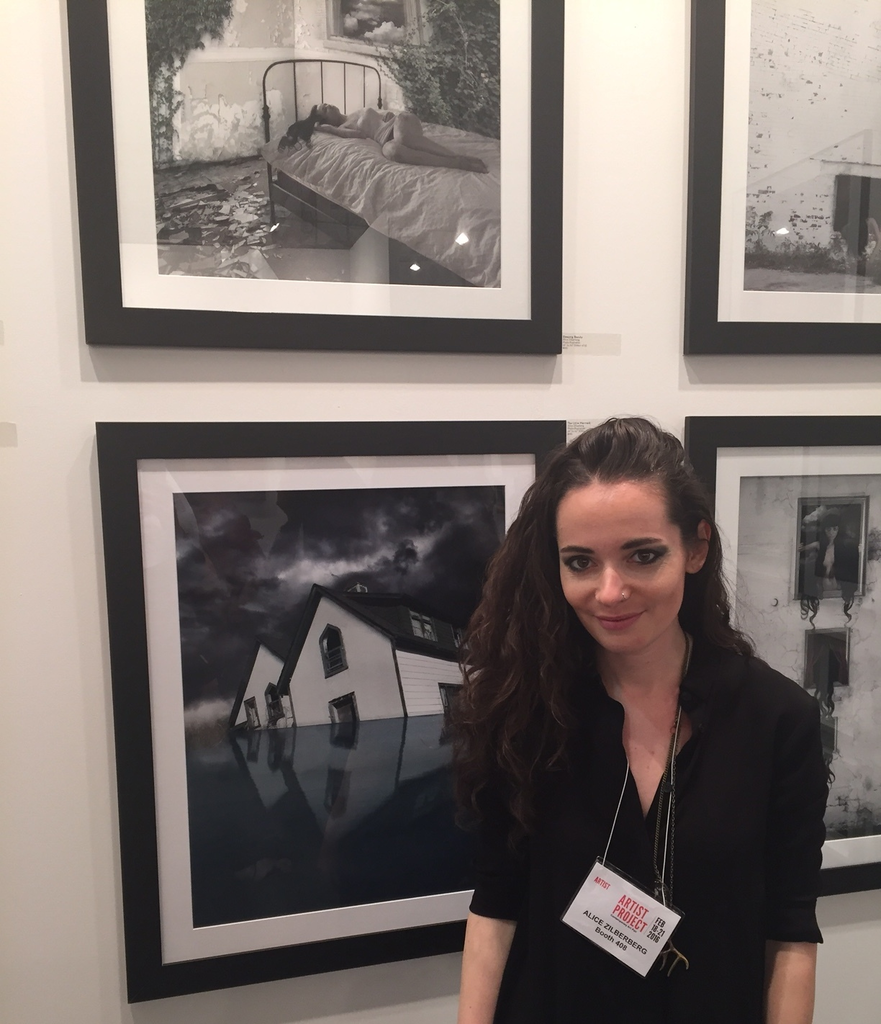 Alice Zilberberg with her photographs
Alice Zilberberg with her photographs
The glossy paintings of Marcelo Suaznabar are evidence of a surreal dream state in which we attend an apocalyptic wasteland of nomadic aquatic circus performers. The comical, fishy characters that – like the strange composite creatures of Hieronymus Bosch – are the only subjects of his works glide across endless, drab spaces like the desert scenes by Salvador Dali. The complete emptiness of his landscape express his consistent theme of biblical apocalypse and weaving in themes of current environmental catastrophe. The creatures might be seen as allegorical figures of temptation in limbo, or the mutation of the Earth’s chemical annihilation.
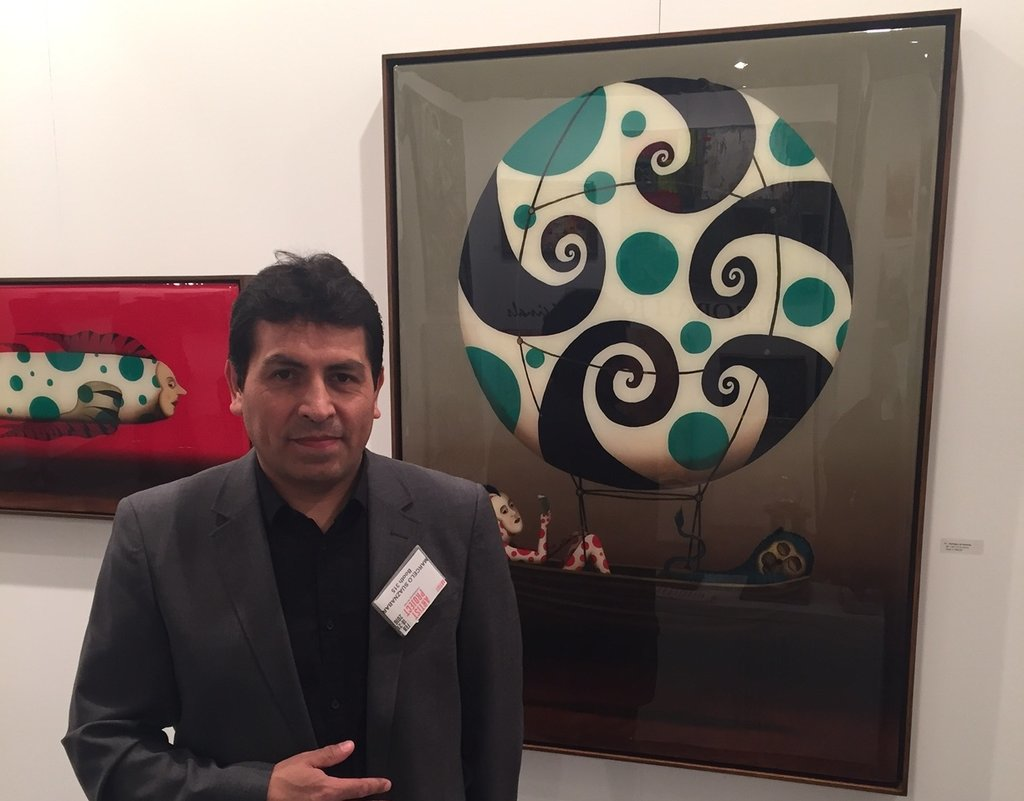 Marcelo Suaznabar in his booth
Marcelo Suaznabar in his booth
Untapped is a section awarded to twenty emerging artist to support their development and engage them in a professional level art fair. Toronto based painter Mauricio Contreras-Paredes paints the intangible spaces of dreams, the Internet or deep space. The two paintings he has chosen to present are composed of blue and off white geometric shapes, so hard-edged and plastic in their perfection that they look like architectural renderings of the light at dusk. His works are not intended to represent or recall a specific space, they are meant only to evoke a vague sense of dimension.
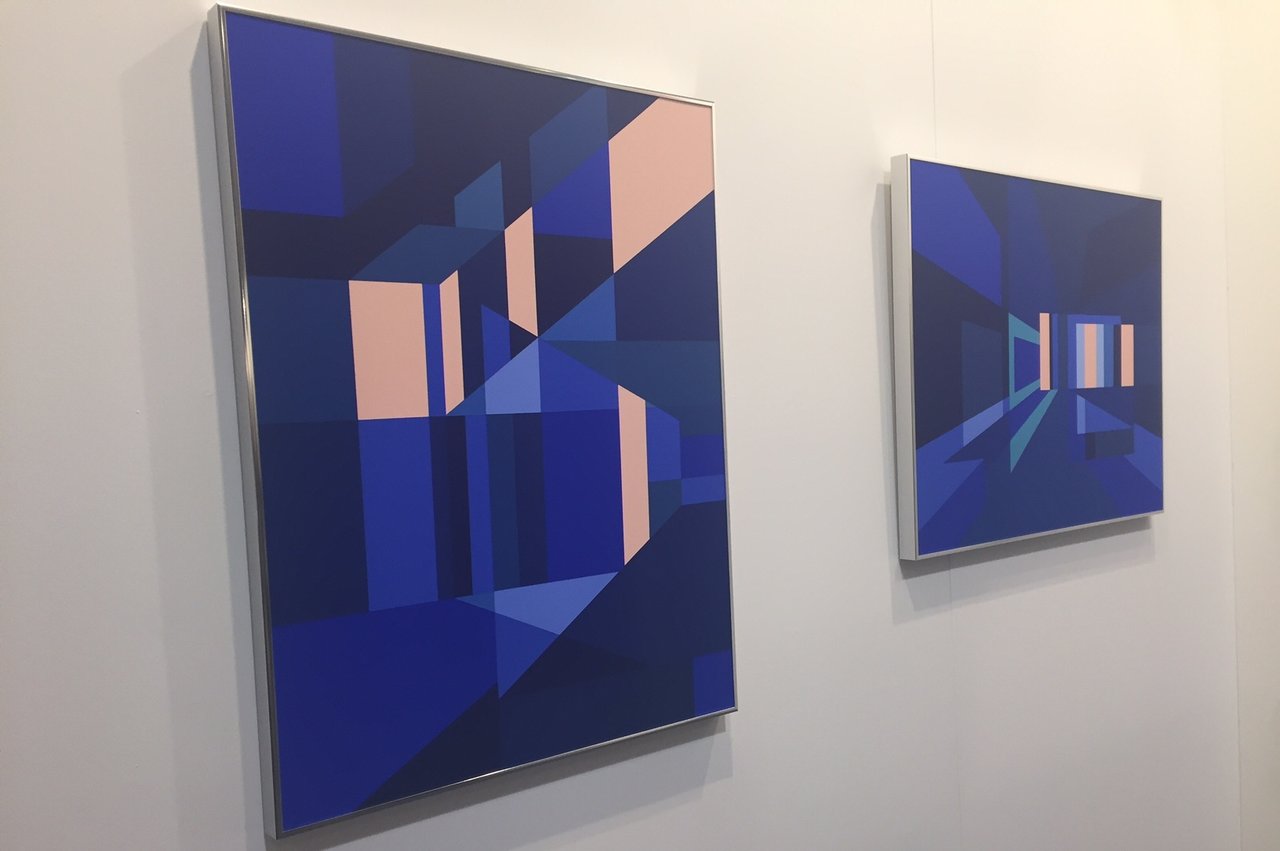 Paintings by Mauricio Contreras-Paredes
Paintings by Mauricio Contreras-Paredes
In addition to the booths, Artist Project also presents a series of installations. Weeping Willow is a sculpture taking the form of a tree made of colorful faces, with tears of ribbon. Philip Hare puts himself in the shoes of women’s history dating all the way back to Eve. His expression of tearful frustration with the patriarchal world is an incredibly labour intensive work of art.
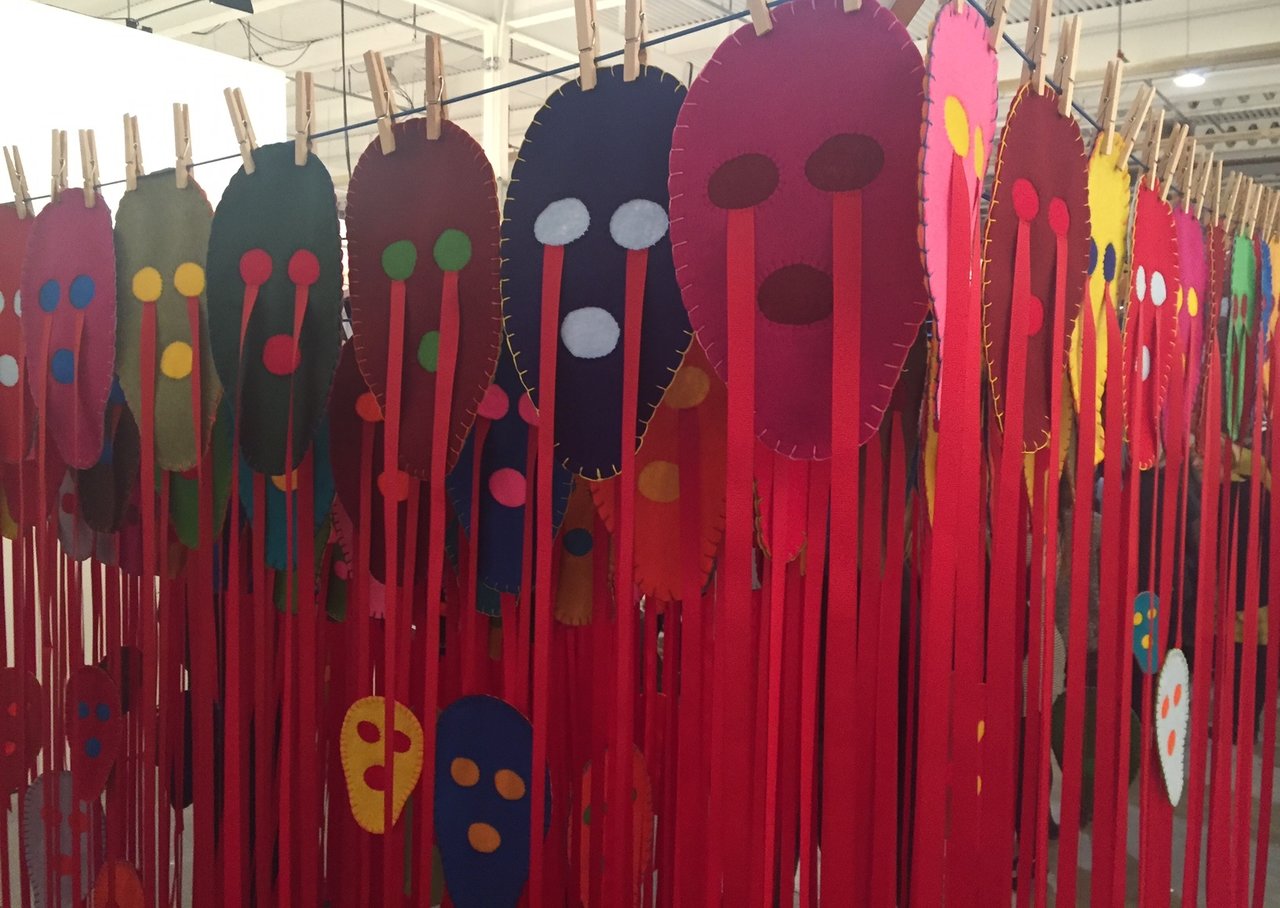 Weeping Willow (detail) by Philip Hare
Weeping Willow (detail) by Philip Hare
Alongside the sculptural installations is a performance work by Adam Filek. Walking and Talking Stones is a conversation between the bodies of the performers and the large rocks on a wide plinth. It aims to represent the time and place where Earth brings life to their being and they provide care through expressive movement for the Earth. The stamina required of this work – as it is presented everyday of the fair – is impressive.
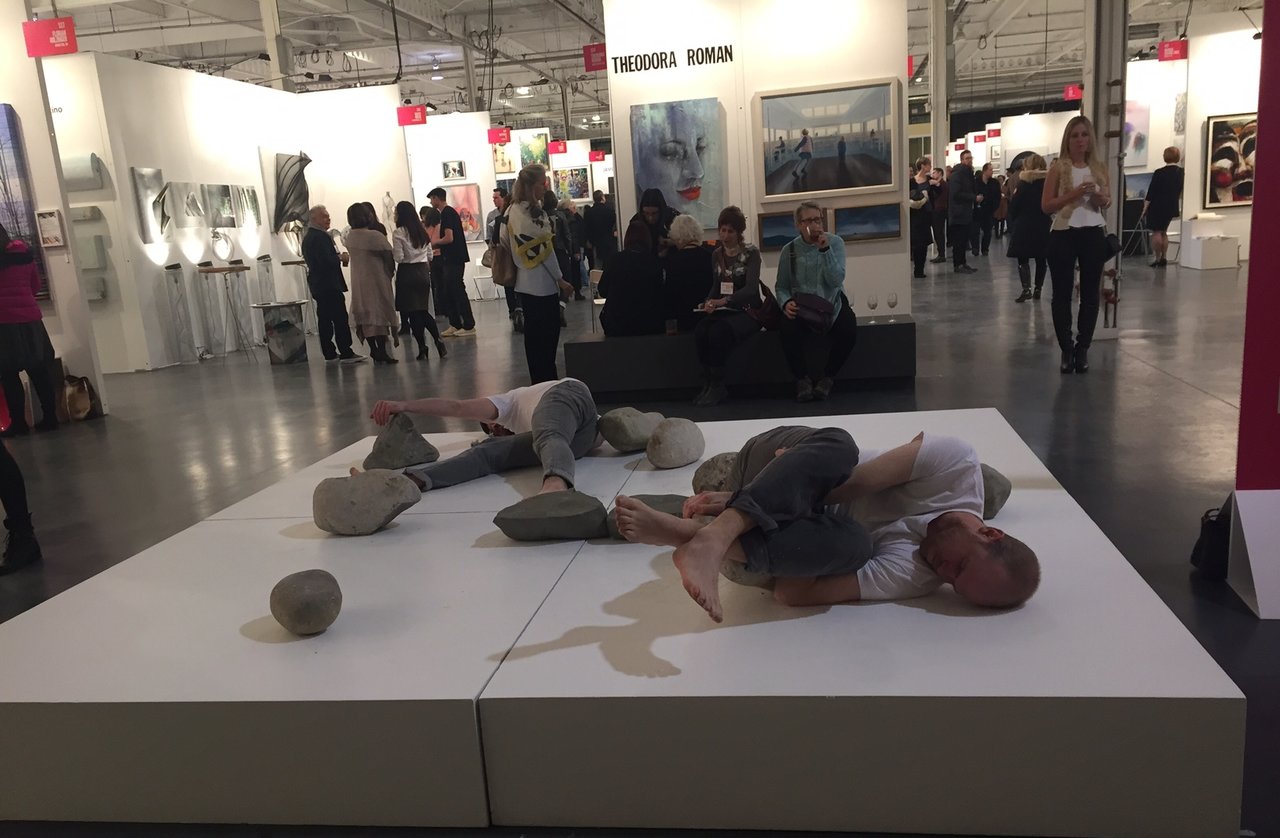 Walking and Talking Stones, a performance work by Adam Filek
Walking and Talking Stones, a performance work by Adam Filek
Art Fairs can often feel like places of commerce or business, but Artist Project successfully engages non-profit projects as well and provides a platform to the public for conversations about artistic practices.
Text and photo: Alice Pelot
Veronique Sunatori presents several pieces that allow for playful interaction at the Artist Project this year. In an art fair that is dominated by canvas paintings, her sculpture series titled “Maybe The Light Will Save Us” was a refreshing change of scenery.
Veronique Sunatori, from Maybe The Light Will Save Us series. Photo courtesy of the artist
Upon seeing her work, you will be cautiously tempted to put your eye into the peephole of a small black box and crank a dial attached to it, not knowing what to expect. Sunatori told me that many visitors that evening were hesitant to be engage with her artwork, so fear not – as I will reveal to you that a delicate image of sparking electricity greets you on the other end of this peephole. Sunatori was able to repurpose a hand-cranked flashlight in order to give the illusion of captured lighting. In this series, she also showcases slightly tweaked apparatuses that touch on themes of mystical perception. You can find her work in the untapped emerging artists section, booth U-3.
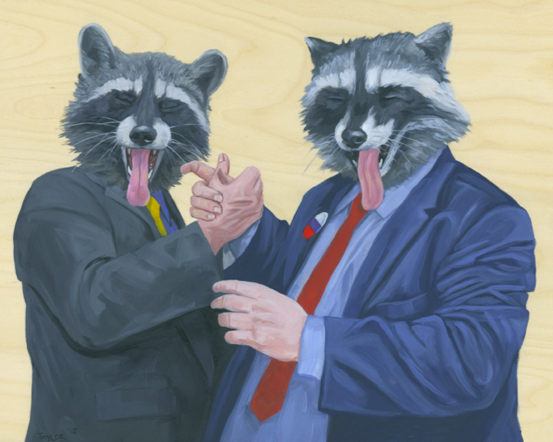 Tony Taylor, Time To Take Out The Garbage, oil, 2015. Photo courtesy of the artist
Tony Taylor, Time To Take Out The Garbage, oil, 2015. Photo courtesy of the artist
At first glance, Tony Taylor’s work seems to be another series of commonly anthropomorphic animal illustrations, but upon closer inspection his paintings seem to hit a cord in your subconscious – one of recognition. It is only then you realize that he has recreated stills of iconic political moments, frozen in oil paint, and carefully matched the mannerisms of politicians and media moguls to those of well suited animals. Many of his pieces represent local municipal and federal political snapshots. This one nods to Canadiana and is more than appreciated in an exclusively Canadian fair. One of my favorite pieces is shown above, where the Ford brothers shake hands during the heydays of a Ford-led Toronto. Taylor’s representations of the Fords as racoons was a sly choice, as Torontonians are known to be guarded against the resilience of these nocturnal animals. You can find Tony Taylor’s clever illustrations in Booth 309.
Ella Gorevalov
*Exhibition information: February 18 – 21, 2016, Better Living Centre, 195 Princes’ Boulevard, Exhibition Place. Exhibition hours: Friday: 11 – 10, Saturday: 11 – 8, Sunday: 11 – 6 p.m.

